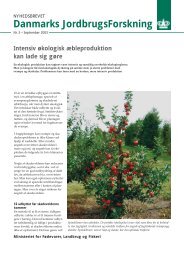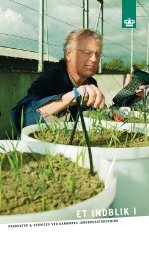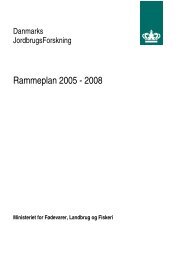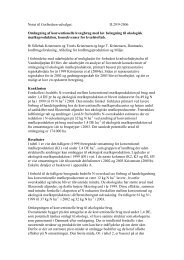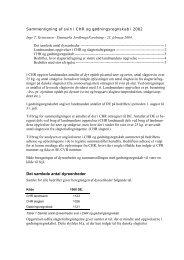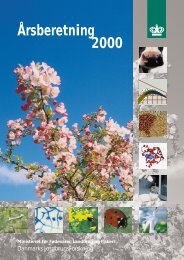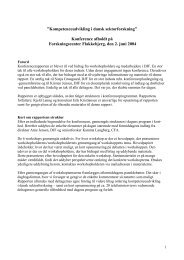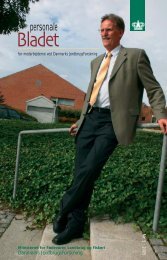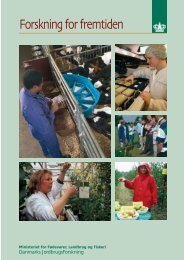Reproduction performances and conditions of group-housed non ...
Reproduction performances and conditions of group-housed non ...
Reproduction performances and conditions of group-housed non ...
Create successful ePaper yourself
Turn your PDF publications into a flip-book with our unique Google optimized e-Paper software.
- Paper I -<br />
Therefore, low energy supply compared to flushing does not seem to have any effect when<br />
looking isolated at the period from weaning to mating. Whether it has an effect in sows that<br />
experience severe weight loss during lactation is difficult to say because the results are inconsistent.<br />
King & Williams (1984) did not find any significant interactions between feed<br />
intake in lactation (25 MJ ME day -1 or ad libitum) <strong>and</strong> feed intake from weaning to mating<br />
(19.3 or 50.1 MJ ME day -1 ) on litter size in first litter sows even though the restricted fed<br />
sows had a weight loss <strong>of</strong> 37 kg during lactation. However, Baidoo et al. (1992) found a<br />
significant interaction between feed intake during lactation <strong>and</strong> feed intake after weaning in<br />
second parity sows because low feed supply after weaning reduced embryo survival only in<br />
sows fed restricted during lactation.<br />
Nielsen et al. (1981), reported that fasting compared to 44.8 MJ ME on the day <strong>of</strong> weaning<br />
resulted in a <strong>non</strong>-significant (P=0.08) smaller litter size. In contrast, Tribble & Orr (1982)<br />
were not able to find any effect <strong>of</strong> fasting two days after weaning. Perhaps the lacking effect<br />
in Tribble & Orr (1982) is due to a shorter lactation length (18-38 days compared to<br />
28-56 days in Nielsen et al. (1981) since Allrich et al. (1979) only found an effect <strong>of</strong> starvation<br />
after mating on litter size in sows lactating for 30 days <strong>and</strong> not in sows lactating for 21<br />
days. Weight loss during lactation is not reported in the mentioned studies but it is however<br />
likely that weight loss is higher, the longer lactation length, why these results confirm that<br />
the effect <strong>of</strong> low feed intake after mating depends upon the condition <strong>of</strong> the sow at weaning.<br />
All in all, there seems to be no evidence <strong>of</strong> an effect <strong>of</strong> low energy intake (19.3-37.2 MJ<br />
ME day -1 ) compared to flushing (ad lib or close to ad lib) from weaning to mating on ovulation<br />
rate in sows. However, it is possible that low feed intake (37.2 MJ ME day -1 ) has a<br />
negative effect on litter size in sows that experienced severe weight loss (e.g. 39 kg) during<br />
lactation. Pregnancy rate does not seem to be influenced by energy intake before mating.<br />
3. Effect <strong>of</strong> energy intake in early pregnancy<br />
In Table 2, the results from the 13 experiments presented in this chapter are summarized. In<br />
these experiments, the effect <strong>of</strong> energy intake in early pregnancy on number <strong>of</strong> embryos<br />
<strong>and</strong>/or pregnancy rate has been studied.<br />
29




